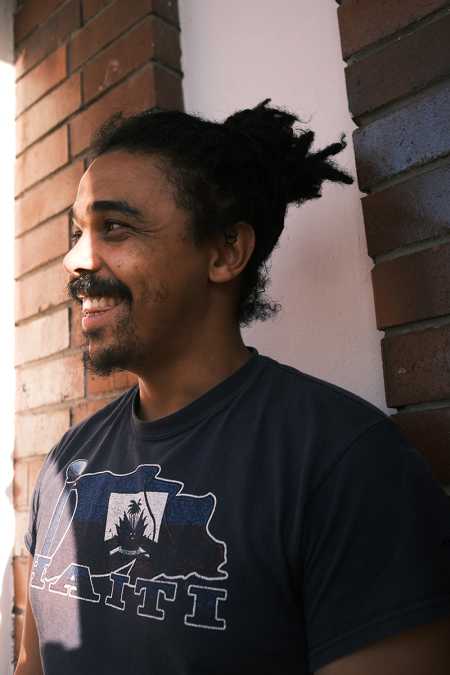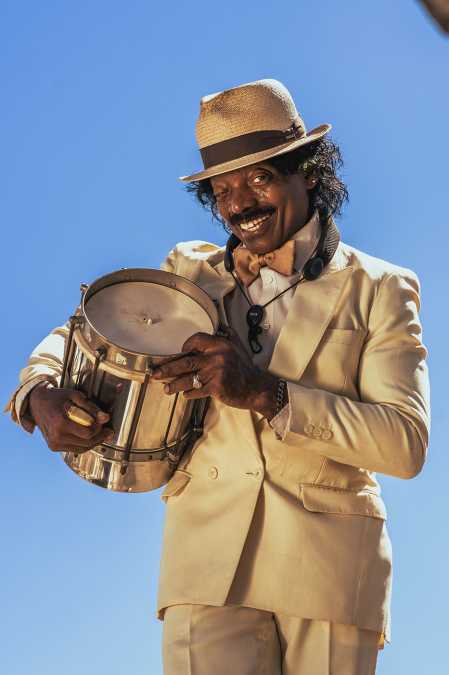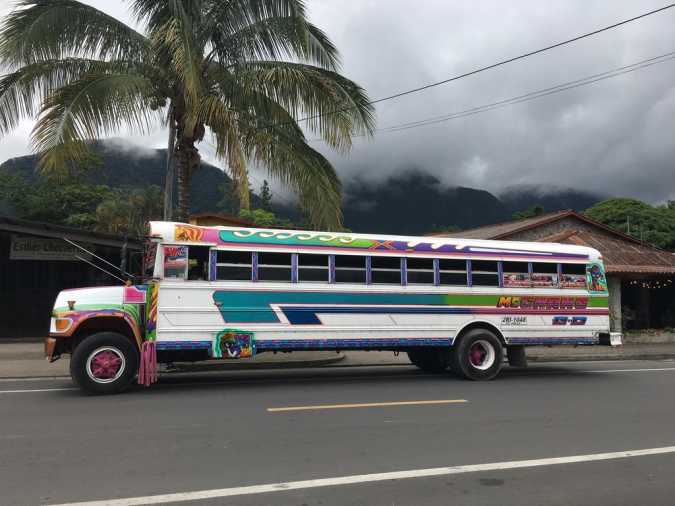LnHD (Lynn Nandar Htoo) & rEmPiT g0dDe$$ (Victoria Yam) are two of Southeast Asia’s boldest new voices, fusing industrial club sounds, field recordings, fractured vocals and percussive minimalism. As the co-founders of Align.Online, a digital community that connects women and queer artists from all over Southeast Asia, they are one of our COSMOS Embassies 2025, performing at Le Guess Who? in November. In June 2025, their fellow COSMOS Embassy Liquid Architecture invited the duo to Australia to engage in a series of performances, DJ sets and artist conversations.
The following interview was initially inspired by a talk with Lynn and Victoria, which was held at Hope St. Radio in Melbourne. The words shared in the interview are based on ideas developed in the artist talk as well as conversations via email correspondence between Rohan Rebeiro (Senior Creative Producer, Liquid Architecture) and Lynn & Victoria.
ROHAN
Over the past two years, your practice across live electronic music performance and DJing – both solo and as a collaborative duo – have flourished. You have performed on iconic festivals and been included in programs worldwide, including COSMOS/Le Guess Who? (NL), CTM (GER), Dark Mofo (AUS), REWIRE (NL), and Nusasonic across Southeast Asia. Looking back, how did you begin your journey in music and sonic arts?
Victoria
I began my journey in music within Kuala Lumpur’s underground punk scene, playing the electric guitar in a pop-punk band in DIY spaces. Early on, I witnessed Rotten Ruckus (the band my drummer was also in), a female-fronted punk band, perform Fuck Police Brutality. The urgency of their political message and the unapologetic presence of their vocalist was transformative for me. In a scene that was largely male-dominated and devoid of community leaders who reflected my identity, I felt both the absence and the possibility of something more. This experience has since been one of the motivations for my practice to help build a cultural and creative infrastructure that centres marginalized voices and reimagines what a more inclusive and equitable scene can look like.
Lynn
I started making music in Yangon, singing and playing guitar in small bars as an indie singer-songwriter. It was simple, but it meant everything to me.
I also play bass, but my deepest roots are in Shan State, where I grew up surrounded by nature and spirituality. The sounds of wind bells in temples, the rhythms of prayer chants, and the sounds of crickets still echo in my music today.
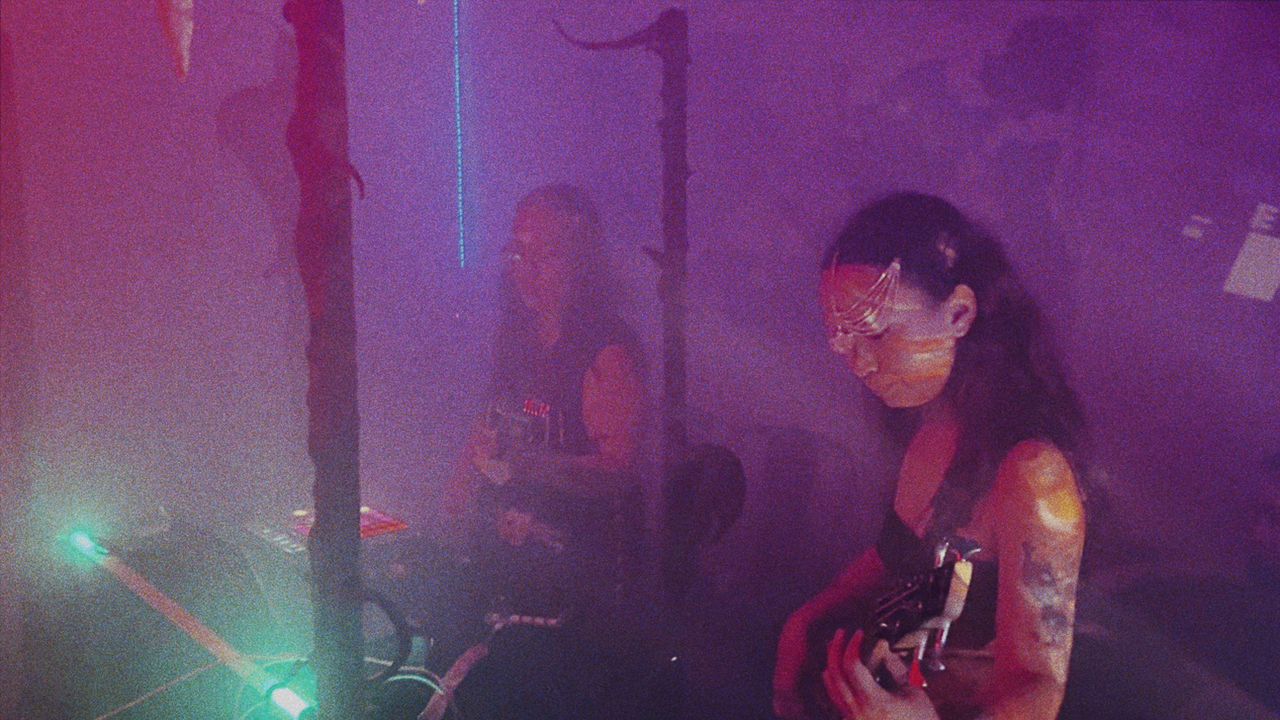
Shan State would have been an incredible place to grow up and of course a very rich sounding environment as you mention. Yangon and Kuala Lumpur aren’t super close to each other, how did you eventually come together?
Victoria
We first met online when Lynn was organizing an online music production workshop from Yangon featuring CORIN, and I was one of the participants. Later, we met in person during a research residency in Ho Chi Minh City, organized by Nusasonic, which focused on decolonizing Southeast Asian electronic music, led by Khyam Allami, who developed Leimma and Apotome. The residency brought together artists and researchers from across the region to explore how sound and music could challenge colonial frameworks and reimagine local narratives. That experience laid the foundation for our collaboration.
Lynn
Yes, we met when I was organizing the CORIN workshop on behalf of MATTER_audiovisuallab, a community platform I was part of while in Yangon. Both Victoria and I have been deeply inspired by CORIN’s work, which made it even more meaningful when we were invited by Liquid Architecture to Australia—because during that trip, we had the chance to see CORIN perform at Dark Mofo.
You’re currently based in Phnom Penh, Cambodia. Is there a scene or community in Phnom Penh to share in what you do?
Lynn
In Phnom Penh, I have been organizing a number of femme-led parties under the name FEMME PULSE, alongside a dedicated experimental music night. It hasn’t always been easy—audiences tend to be smaller unless it’s framed as a party—but it has been rewarding to watch these efforts slowly take root and grow. Our parties usually take place at The Cage or Canopy, two alternative spaces in Basaac Lane that are less commercial than the city’s mainstream clubs. For the experimental nights, I’ve collaborated with Meta House, a Goethe-Institute-associated art exhibition space.
Victoria
The electronic music scene here is still growing, but what’s fascinating is how traditional musical practices remain deeply embedded in mainstream pop. It’s especially exciting to witness artists like Cambodia’s best-known rapper incorporating traditional instruments into his beats.
Cambodia’s best-known rapper… VannDa?
Victoria
Yesss!!
Are you a fan of his music in general?
Victoria
I admire his artistry! And it’s super cool that he's always referencing Khmer culture. He featured Kong Nay, who was the master of the chrieng chapei genre. He was one of the few who survived the Khmer Rouge. During the Khmer Rouge, anyone associated with traditional culture were killed or sent to labor camps.
The traditional chrieng chapei sounds mixed with rap and beat based production are a really powerful way to acknowledge cultural roots and history. In your own tracks you both incorporate field recordings and instruments that are iconic to the Southeast Asia region. The sounds are positioned in parallel with angsty and dystopian club tones and rhythms. Can you expand on this methodology and your intentions?
Victoria
For Lynn and me, bringing Southeast Asian field recordings and traditional instruments into dialogue with angsty, dystopian club sounds is about collapsing distances—between past and future, rural and urban, ritual and rave. Some of the most personal recordings we use come from Lynn, who captured the environment of her home in Yangon before she had to leave. These intimate sounds sit alongside the resonance of regional instruments—Malaysian rebab, gendang, and seruling; Cambodian chapei and tro; and echoes from Myanmar, where Lynn is especially inspired by the wind bells of temples, which she reimagines and synthesizes using digital plugins.
We sample these sounds directly from our collection, believing that sampling preserves the raw texture of lived environments. Playing them digitally allows us to physically inhabit and transform them.
Our aim isn’t to treat these sounds as static heritage, but as living matter—shifting, mutating, and holding power in new environments. By reframing them through a contemporary, sometimes abrasive club language, we hope to keep them moving: through bodies, through spaces, across borders—so that the sound of a place remains alive, urgent, and impossible to ignore.
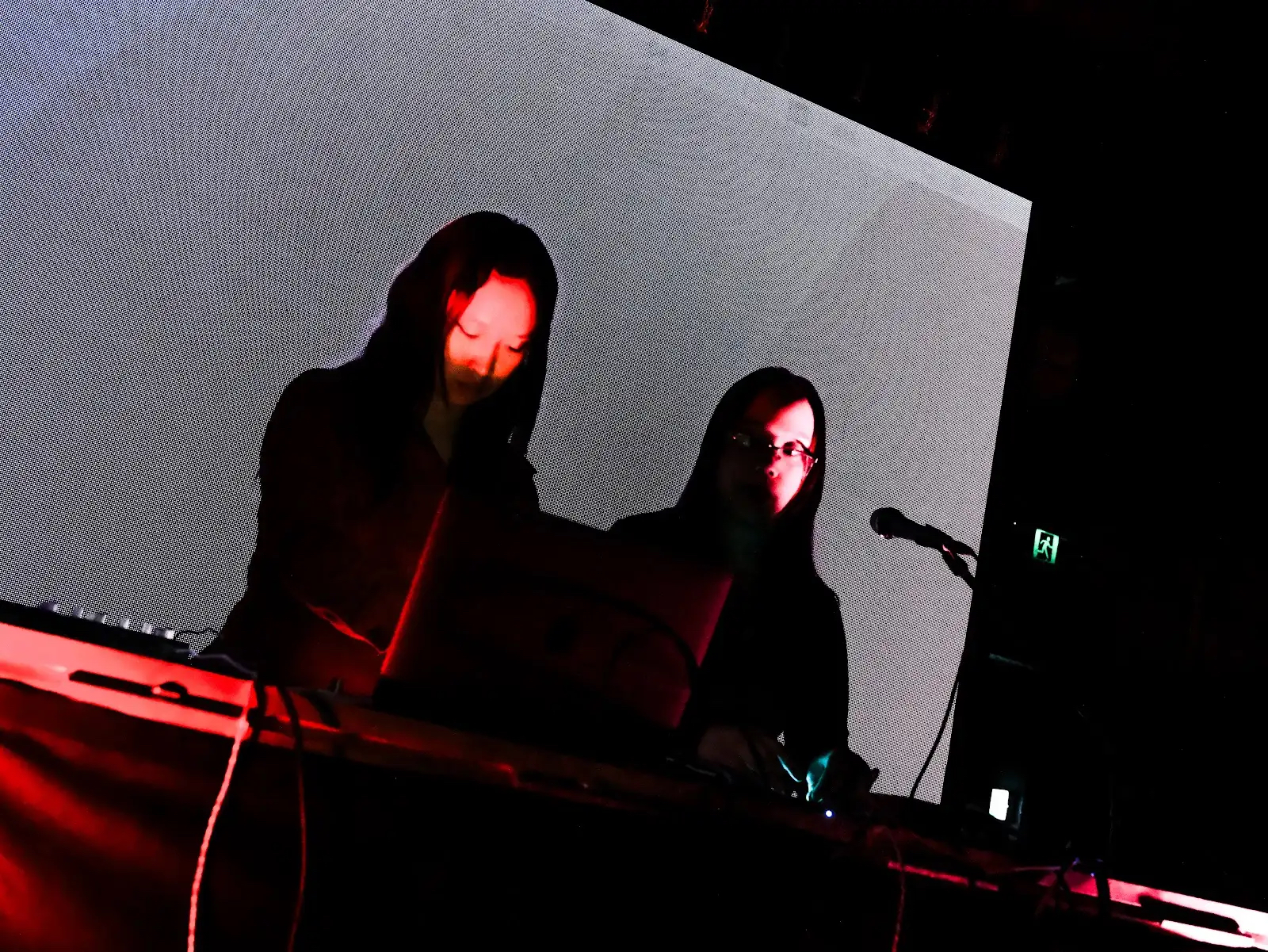
In your work Syncopated Ether Dreams, produced for CTM, you draw from diasporic memory and embodied resistance, can you expand on this?
Victoria
Growing up in Malaysia and now living abroad, I carry fragments of home—sounds, rhythms, textures—that exist both in memory and in my body, shaped by the realities of being queer in a society where we face systemic oppression. For Lynn, leaving Myanmar because of the war added another layer: her displacement carries the weight of urgency, survival, and longing, and these experiences are inseparable from how we shape our sound.
How are these deeply personal sentiments made meaningful in a club setting?
Victoria
In club culture, this becomes particularly powerful. The dance floor isn’t just a site for release—it’s a space to collectively inhabit sound, movement, and identity. Community building and knowledge sharing happen through these embodied experiences: people learn by feeling, by participating, and by navigating space together.
… and through a shared experience of sound?
Victoria
Yes, sound communicates these ideas not only through what is played, but also through how it’s layered, paced, and spatialized—through repetition, tension, and resonance. It carries memory, evokes belonging, and creates a sense of collective care and resistance that can be felt even without words.
The immediacy of the sound you produce, especially on bigger club sound systems, is remarkable. The way the tracks are composed suggests a degree of technical production finesse. What is your studio setup like in Phnom Penh?
Lynn
To me, a studio is more than just a physical space: it’s where ideas are tested, layered, and brought to life. In Phnom Penh, I work in a well-equipped sound studio with a spatial sound system and high-end recording gear, which gives me room to experiment in-depth. But our everyday process often happens in a much humbler home setup.
At home, we work in Ableton, and thanks to the generous support of Ableton for ALIGN.ONLINE, we’ve been given Push 2, Move, and full Ableton licenses, which have become central to how we create and perform. We produce with monitor speakers in our small space, recording and arranging ideas directly into Ableton. Our process usually begins with textures or field recordings, which we then layer against rhythms—sometimes starting with a kick, other times with an ambient sound that sets the mood. Traditional instruments and tunings from across Southeast Asia are also a big part of our palette. These sounds often become starting points for tracks—sampled, retuned, or digitally transformed.
Lately, I’ve also started playing around with an analog bass synthesizer, which brings a raw edge to our sound. The combination of professional studio access and our home setup allows us to stay flexible—whether we’re sculpting immersive spatial pieces or building sweaty, cathartic club tracks in our apartment.
You mentioned earlier that you both met through a workshop that Lynn organised, which I imagine would be ideal for networking and sharing resources, particularly for underground scenes and for queer/femme artists across the region. Can you share some insight into the current queer/femme club scenes that are currently active in the Southeast Asia region? Can you recommend some artists you are particularly interested in?
Victoria
There are two Khmer artists that Lynn and I deeply admire. The first is Laeti Muong, also known as DJ Sotheavy, who founded Asian Core (asiancore.zone). It’s an online and IRL platform dedicated to FLINTA Asian alternative artists, with an impressive database of 286 musicians across 34 countries, searchable by music tags, location, or through its web radio. Beyond archiving, Asian Core hosts events, organizes talks on issues like anti-racism and Asiafeminism, and leads music curation projects from its bases in Paris and Brussels. This spirit really resonates with our own practice, as Lynn and I have been collaborating more closely with diasporic Southeast Asian queer artists. Laeti also invited us to perform at Point Éphémère in Paris as part of an all-queer Asian lineup, where we shared the stage with To Van Kao, a Paris-based electronic artist who weaves traditional Vietnamese instruments into her performances.
We also admire Maggie Tra, a Sydney-based music producer and DJ of Khmer and Vietnamese heritage. Maggie has built a reputation for being both grounded and visionary, always pushing for greater diversity in the music industry. She founded SYS Sister Sounds, a label and collective that uplifts women and non-binary people in music. One of its most impactful projects is Pho The Girls, a DJ workshop that has grown into a thriving community of women and non-binary DJs in London, Vietnam, and Australia. More recently, she established Hà Nội Community Radio, creating yet another platform for alternative voices and sounds to be heard.
ALIGN.ONLINE is a platform that you have developed to showcase queer/femme artists in Southeast Asia. How did the collective begin?
Victoria
We were both invited to a music research residency in Sagada, Philippines, led by meLê yamomo from Decolonizing Southeast Asian Sound Archives (DeCoSEAS), which rethinks how sonic memory is preserved through postcolonial and feminist frameworks. We worked alongside inspiring women sound practitioners—like Rosemainy Buang, a Gamelan musician & teacher from Singapore, Rani Jambak, who builds ecological instruments rooted in Minangkabau heritage, and Anjeline De Dios, a Filipino sound healer integrating ritualistic vocal glitches with industrial textures, as well as Apé from Phédre, a Canadian-Filipino artist mixing club, jungle, and breakbeat into experimental pop.
This experience made me want to create a platform for Southeast Asian women and queer artists that’s truly accessible. Somewhere we can connect, collaborate, and grow without waiting for institutional approval. For me, it starts with accessibility: breaking down gatekeeping and strengthening the informal networks that already hold us up. Then it’s about visibility—making sure our work isn’t treated like a novelty, but recognised as essential. And finally, sustainability: building the emotional, artistic, and material support we need so we can keep creating, not just surviving, but thriving together.
Since the emergence of these platforms, have you seen positive growth in the Southeast Asian creative queer/club communities?
Victoria
Yes, I think the scene across SEA is definitely expanding, though unevenly. There are more collectives, DIY spaces, and networks emerging that are inspiring—people who are building communities from scratch, creating platforms for women, queer, and otherwise marginalised artists. These collectives don’t just host events; they share knowledge, skills, and resources, which is crucial in a region where institutional support is limited.
The connections between these platforms are slowly strengthening the broader community. Cross-border collaborations, workshops, and exchanges are creating opportunities that didn’t exist before, and they show that a more sustainable, self-sufficient ecosystem is possible. It’s still fragile, but there’s a clear sense of momentum and mutual care that makes the scene feel alive and full of potential.
Looking outside of the Southeast Asia networks, hubs and scenes, you’ve recently presented work internationally with some iconic festivals and institutions. How did these invitations come about?
Victoria
Our first experiences with organisations outside Southeast Asia came through specific projects. For CTM, it was because we won the open call for Radio Lab, where we presented a spatial sound audiovisual installation in Radialsystem, Berlin. Rewire Festival, on the other hand, came through my own rEmPiT g0dDe$$ project tour. Both experiences were eye-opening—suddenly our work was in dialogue with global experimental music communities, and it showed me that deeply local sounds and practices could resonate internationally. At the same time, it highlighted the disparities in access and resources, which reinforced my commitment to building platforms for women and queer artists back home.
When you are featured on festival line-ups outside of Southeast Asia, what sort of impact does it have on your work and your community?
Victoria
Being showcased at festivals outside Southeast Asia has a significant impact on my practice. It pushes me to think beyond local contexts and experiment with scale, presentation, and audience interaction in ways I might not at home. It also creates a feedback loop—seeing how international audiences respond to work rooted in SEA traditions and environments helps me reflect on and refine my own approach.
Lynn
For scenes back home, I see the impact as both tangible and symbolic. It puts SEA artists on the map and demonstrates that it’s possible to connect our region to European and global platforms. It doesn’t instantly change local infrastructure, but it can spark others to start their own projects, experiment with new formats, and see international engagement as something within reach. On a personal level, it helps raise my profile locally, but more importantly, it creates opportunities for dialogue, collaboration, and exchange across borders.
The festivals are undeniably great for increasing visibility and creating both social and artistic connection. On the flipside, have the festivals ever felt tokenistic or extractive?
Victoria
Yes, these tensions definitely exist. On one hand, opportunities to tour or be showcased internationally are invaluable—they provide visibility, resources, and a chance to connect with new audiences. On the other hand, there are moments when it can feel tokenistic, especially if the work is framed as “exotic” or treated superficially without understanding its context, history, or the labour behind it. For us, it’s about navigating that balance: accepting the opportunities while also pushing for accountability, transparency, and respect.
Are artists from Southeast Asia looking outward to be inspired by European hubs?
Victoria
Some creative communities in SEA do look towards Europe or other global hubs for inspiration, collaboration and access to networks or technology. But at the same time, there’s a lot of innovation happening locally that’s self-contained and responsive to the specific cultural, social, and political conditions of the region. What’s interesting is how these two impulses—looking outward and building from within—often feed into each other, creating hybrid practices that are both rooted in SEA and in conversation with the wider world.
Lynn
I wouldn’t say creative communities in SEA are defined by looking outward—they’re primarily driven by their own realities, challenges, and innovations. Europe or other international hubs can be points of reference, but the creativity here often comes from necessity, experimentation, and dialogue within local networks. The work is deeply embedded in the social and cultural fabric of the region, and that self-contained energy is what gives it its unique voice, even when it eventually reaches global platforms.
How has your work been received outside of Southeast Asia?
Victoria
Audiences outside SEA often respond with curiosity and surprise. Many are drawn to the textures and rhythms that feel distinctly Southeast Asian, but experience them in ways they haven’t heard before—through dystopian club sounds, experimental layering, or immersive spatial setups. There’s usually a sense of fascination with how local traditions, field recordings, and instruments coexist with contemporary electronic practices. At the same time, I notice that these audiences engage physically and emotionally in ways that are unexpected, which often pushes me to think differently about pacing, intensity, and the ways sound can shape a space.
Lynn
Audiences outside SEA tend to respond with a mix of wonder and unfamiliarity. They often haven’t encountered the textures, instruments, or field recordings we use, so the work can feel alien or otherworldly. That distance allows them to experience it in a fresh way, focusing on the immersive qualities—the rhythms, the layering, the space—rather than trying to interpret it through a cultural lens.
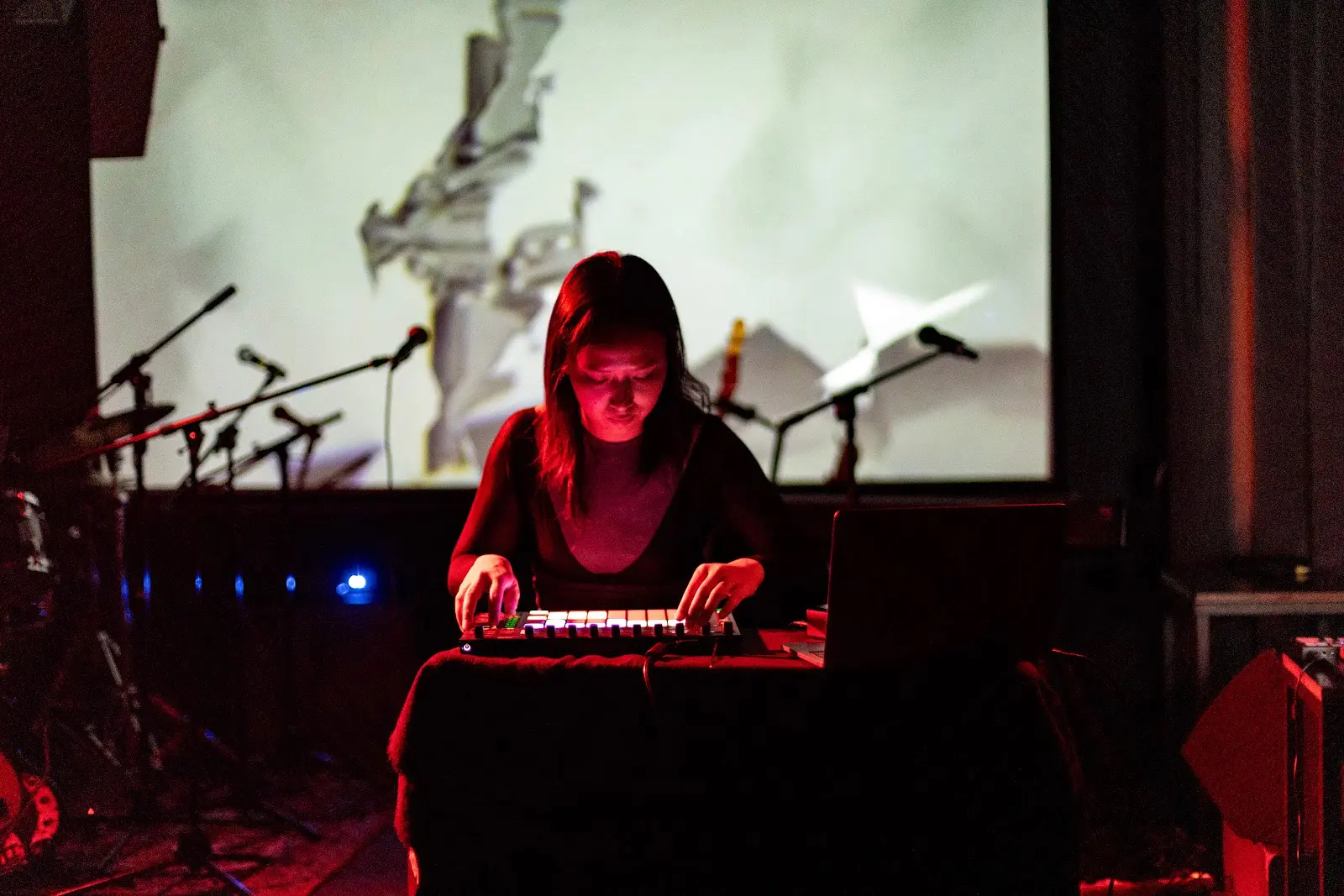
With the ubiquity of digital tools for music making and of course the divisive conversations around AI, what do you anticipate music and sound practice to be like ten years from now?
Victoria
Lynn and I recently returned to playing instruments after years of producing electronic music, and that shift made me notice how different the creative process feels. While laptop-based production is rich and stimulating, it often felt cerebral—an ego-stroking process, like a brain massage that could be oddly disembodied. Playing instruments though, feels profoundly human. It grounds us through touch, breath, and resonance.
Electronic music’s origins are complex and contradictory. It grew out of war technologies—oscillators, sonar—and was championed by Italian Futurists, some of whom supported fascist ideologies, linking sound to power and domination. In contrast, Southeast Asian traditional instruments come from harmony with nature—crafted from bamboo, bronze, and hide—reflecting ecosystems, rituals, and community life.
Lynn
I view AI as simply another step in humanity's technological evolution—inevitable and unstoppable, much like the electric guitar or digital recording once were. The real question isn't whether AI will transform music, but how thoughtfully we choose to integrate it. I've started experimenting with Claude and Ableton, exploring how AI can work alongside traditional production tools. Just as musicians learned to harness amplification and synthesizers without losing their artistic soul, we must approach AI with intentional mindfulness, using it as a tool that enhances rather than replaces human creativity and expression.
We both imagine a future where AI and technological innovation exist in balance with cultural memory and ecological care. For me, a sustainable creative practice means valuing community, land, and time. It means embracing slowness, repair, and reciprocity—not just producing endlessly or chasing visibility.
